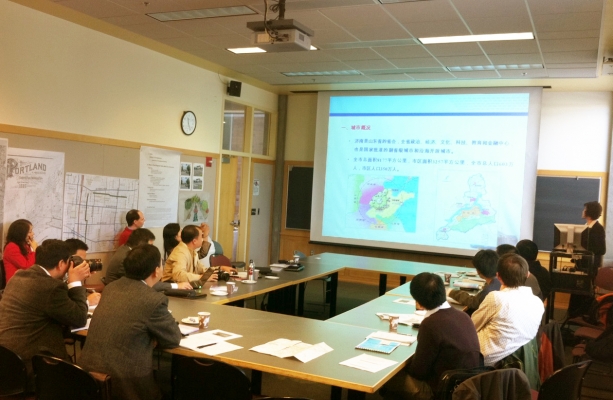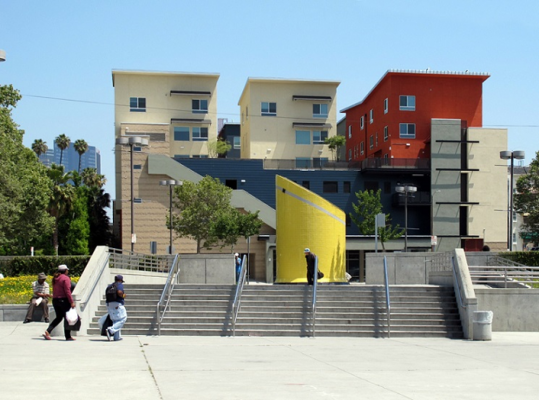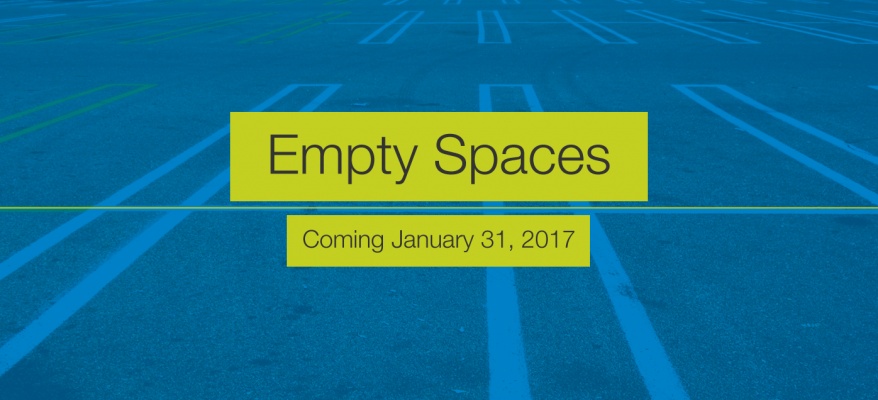On Monday, OTREC faculty and students met with transportation scholars and practitioners from China. Professor Haixiao Pan from Tongji University in Shanghai presented his research on transit-oriented development titled "From TOD to 5D in a Fast Growth City with High Density." His look at Chinese cities indicates that levels of walking and bicycling are key to reducing vehicle miles traveled, perhaps even more so than transit use.
Liyuan Gong, deputy director of the Jinan Public Transport Development Institute, and Wenhong Wang, department head of the Beijing Urban Engineering Design and Research Institute Co., gave overviews of bus rapid transit systems in several Chinese cities.
Professor Connie Ozawa, director of the School of Urban Studies and Planning, welcomed the group to Portland State University. OTREC Director Jennifer Dill presented her research on travel behavior of TOD residents and John Gliebe, OTREC researcher and urban studies assistant professor, presented on dynamic travel demand modeling. Arlie Adkins, an urban studies doctoral student, presented "Getting the Parking Right for Suburban TODs."
The forum gave students and faculty opportunities to exchange ideas about integrating transportation and land use in China and the United States. In both countries, some transit-oriented developments have fallen short of transit-use goals for similar reasons, such as convenience and time. Reliability of transit service often plays a greater role...
Read more


